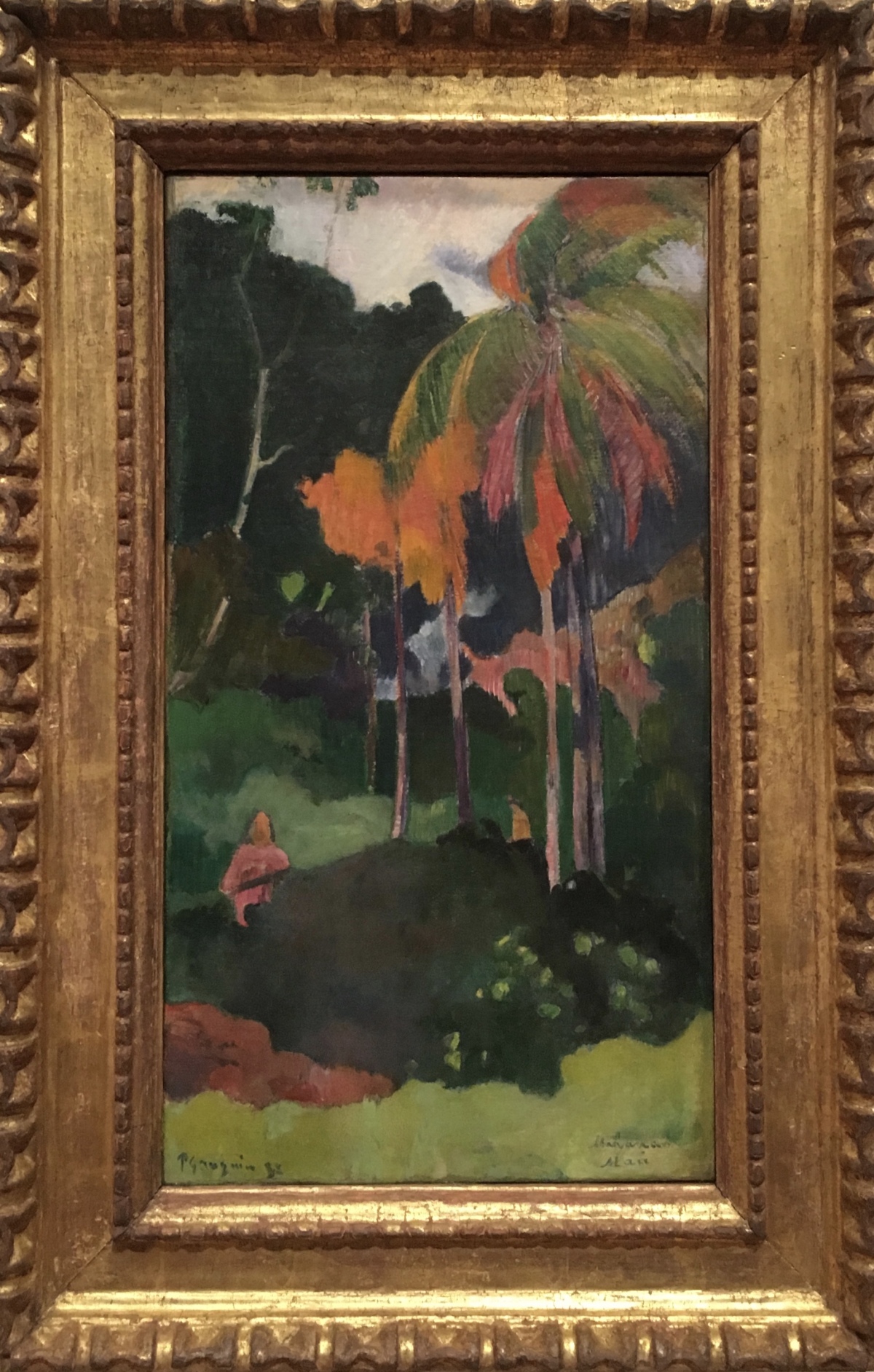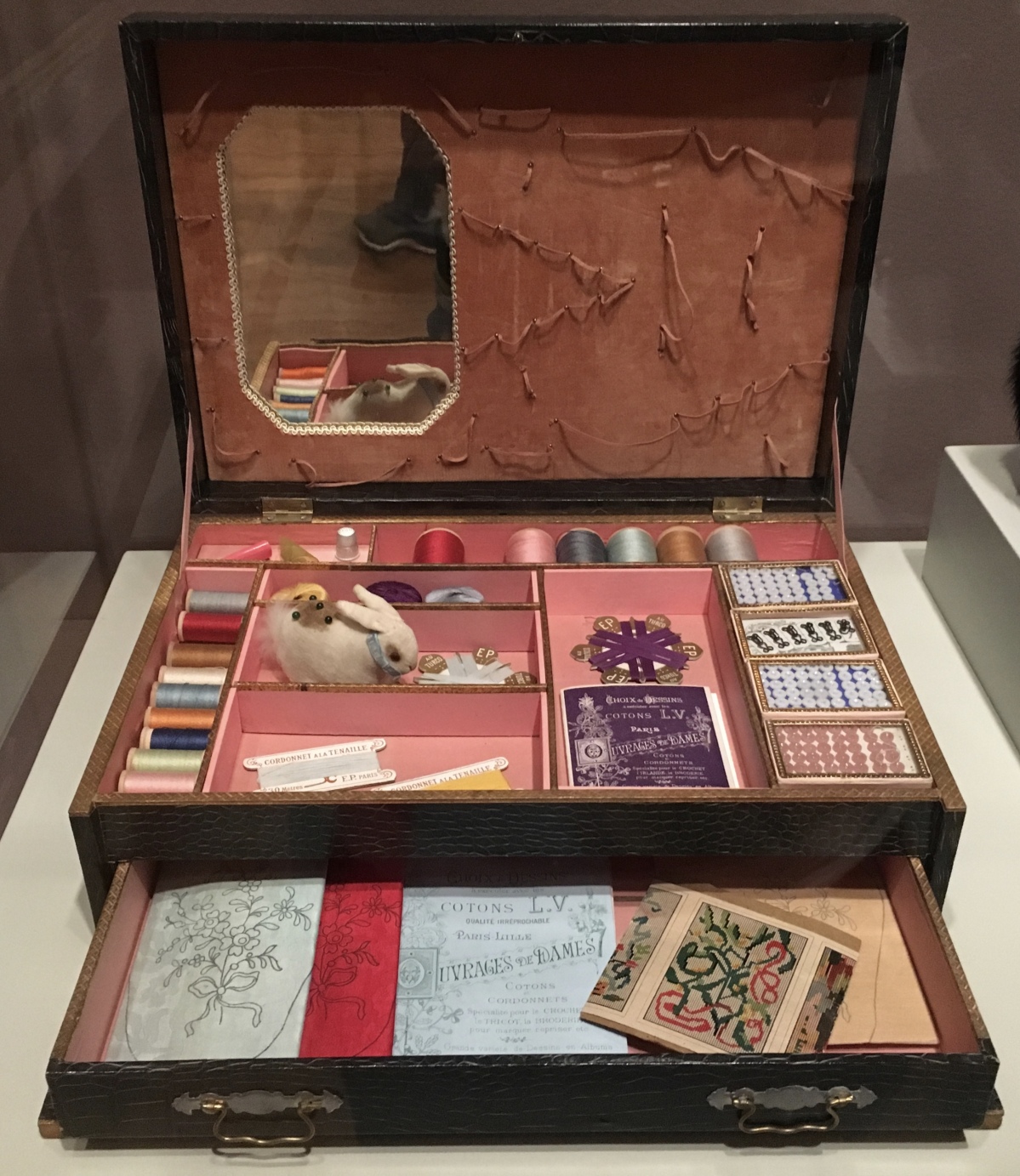At Louisville’s KMAC Museum, I found a young girl in motion, pirouetting and dreaming in a field of flowers; I found women’s faces emerging from rippling water, shadows of blinds on faces, fingers in pistols. These magical images were created by students from Jefferson County Public Schools.
This exhibition was the “Gold Key and American Visions Exhibition” of 2019 under the auspices of the Louisville Metropolitan Region of the National Scholastic Art Awards. It was due to depart the museum soon after my visit.

Gold Key and American Visions Exhibition 2019

Gold Key and American Visions Exhibition 2019
The KMAC Museum is a contemporary art museum that seeks to connect people to art and creative practice. The museum’s permanent collection is rich in regional art that bridges ideas of traditional folk art with contemporary art. The collection reflects Kentucky’s geography and culture through themes of agriculture, domestic life, economy, class, religious belief, and pastimes influenced by a predominantly rural setting.
Another exhibit I encountered here was “Clay Bodies: Moving Through Ceramics” by Sarah Crowner. The ceramics are covered in contorted and fluid images of animals and people, tropical plants in mountainous settings, and birds on twisted tree branches.
The artist’s ceramic pieces were arranged “unscientifically and with a formal slant, as opposed to being arranged by geography or time period,” which is the usual way objects in museums are placed. The artist chose paint colors for the walls that reflected her own color palette.
Sarah Crowner was born in Philadelphia in 1974 and she lives and works in Brooklyn, NY.

Clay Bodies by Sarah Crowner

Clay Bodies by Sarah Crowner

Clay Bodies by Sarah Crowner

Clay Bodies by Sarah Crowner

Clay Bodies by Sarah Crowner

Clay Bodies by Sarah Crowner

Clay Bodies by Sarah Crowner
At the Cincinnati Art Museum, where we went to warm up on an icy winter day, we wandered through the special exhibit: Paris 1900: City of Entertainment. Over 200 works were presented that were made at the turn of the century in the vibrant and rapidly changing City of Light, a city that stood as a symbol of elegance, opulence and festivity. In 1900, advances in art, technology, fashion and entertainment, along with three decades of peace under France’s Third Republic (1870-1940), established after the Franco-Prussian War of 1870, were showcased during the International Exposition. This Exposition received 51 million visitors in six months; it was the culmination of large-scale building projects of mass transportation and modernized infrastructure, wide avenues, green spaces and public squares, and monuments such as Sacré-Cœur and the Eiffel Tower.
The painter Victor Dargaud depicted this view of the Rue de Chazelles, where the Gaget, Gauthier and Company foundry was located. The enormous Statue of Liberty was assembled here. When it was completed, throngs of people come to see it before it was disassembled and shipped to New York, where it was dedicated in 1886.

The Statue of Liberty by Bartholdi in the Workshop of the Gaget Foundry, rue de Chazelles (1884) by Victor Dargaud
Arranged in thematic sections including the International Exposition, Art Nouveau, the Parisian Woman and Paris by Night, each section explored a range of objects, paintings, sculptures, ceramics and posters to fashion, furniture, and souvenirs. Notable featured artists included Pierre-Auguste Renoir, Camille Pissaro, Henri de Toulouse-Lautrec, Auguste Rodin, Antoine Bourdelle and Camille Claudel.
We enjoyed a whirlwind tour of turn-of-the-century Paris in the middle of a dreary winter Cincinnati day.

Paris Exposition posters
The City of Light was most seductive at night, attracting bohemian aristocrats in search of forbidden pleasures, hedonists and thrill seekers, and artists and actors searching for inspiration. Evenings beckoned with offerings of opera, theater, cafés and cabarets.
The Divan Japonais was one of many cafés-concerts in Montmartre. Jane Avril, a flaming redhead who was a favorite muse of Toulouse-Lautrec, is seated in the foreground, and the singer Yvette Guilbert, a celebrity of the cabaret scene, is shown headless with her signature long black gloves.

Divan Japonais by Henri de Toulouse-Lautrec

Paris Exposition posters

Paris Exposition posters
Art played an important role in Parisian cultural life at the turn of the century. The artistic melting pot attracted young artists, with Scandinavians, Italians, Czechs, Spaniards and Americans among many who came to study at the École des Beaux-Arts or to train at one of many private acadamies.

Portrait of My Mother in Her Salon (1897) by Charles Camoin

Colored Landscape with Aquatic Birds (1907-8) by Jean Metzinger

Fog on Guernsey (1883) by Pierre Auguste Renoir

View of Céret (1920-21) by Chaim Soutine

The Moment of Truth (Mahana Ma’a) (1892) by Paul Gauguin

Undergrowth with Two Figures (1890) by Vincent van Gogh
In Belle Époque Paris, fellow artists were natural source material for painters and sculptors. Students portrayed their teachers and vice versa. Artists portrayed their friends, their lovers and themselves.

Young Girl in a Low-Cut Dress with a Flower in Her Hair (1893) by Berthe Morisot

Last Flowers (1890) by Jules Breton

Romanian Blouse (1937) by Henri Matisse

Portrait of Mary Joy Johnson (1939) by Diego Rivera
Art Nouveau furniture and ceramics glorified an aesthetic of curved lines, asymmetry, and ornamentation inspired by living forms.
A section on Parisian women and fashion showed fancy hats, sewing kits, and paintings of women in sensual poses or doing common activities of the time.

a woman’s hat

sewing kit

women at the turn of the century

women depicted
Bicycles were in fashion and high society girls were not shy about climbing on to vélocipèdes, as the predecessors to the modern bicycle were called. The girl in the painting is wearing a typical bicycling outfit of the period – a high-necked blouse with long sleeves, and an ankle-length split skirt that allows her to move her legs freely.

Bicycle in Vésinet (1903) by Léon-François Comerre
The Rookwood Pottery Company, an American ceramics company founded in 1880 and located in the Over-the-Rhine neighborhood of Cincinnati, was backed by the enormous wealth of founder Maria Longworth Nichols. She had access to Louise McLaughlin’s “secret” technique for decorating under the glaze. In 1880, it was likely that fewer than five potteries in the world could produce pottery decorated under the glaze. It won the Grand Prix at the 1900 Paris Exhibition and became the foremost art pottery in the world. The company suffered three financial blows: the Stock Market Crash of 1929, the Great Depression, and a shortage of materials beginning with World War II. After numerous ownership changes, the company was eventually sold to Cincinnati investors who have revived Rookwood’s cereamics production.
Cincinnati became a foremost center for art pottery in America because the city’s location offered abundant wood for fuel, endless deposits of fine clay, and river transportation for distribution.
Inspired by French Impressionism, American Impressionism embraced works that featured glimpses into the artists’ surroundings without narrative. The works favored brushwork over line, and explored innovative ways to showcase space and light. Artists sought to capture the vitality of modern city life and the refuge of the new suburbs. They also offered escapes to the countryside, the seashore and European locales.

Winter in Cincinnati (c. 1920s) by John Ellsworth Weis

Eden Park (c. 1900) by Lewis Henry Meakin
In winter weather, what could be better than exploring art in fantastic and unusual museums? I am always amazed by human creativity. 🙂
*Friday, March 1 & Sunday, March 3, 2019*
*********************
“PHOTOGRAPHY” INVITATION: I invite you to create a photography intention and then create a blog post for a place you have visited. Alternately, you can post a thematic post about a place, photos of whatever you discovered that set your heart afire. You can also do a thematic post of something you have found throughout all your travels: churches, doors, people reading, people hiking, mountains, patterns, all black & white, whatever!
In my case, my intention was to look for thematic possibilities during my Midwestern Triangle Road Trip, and as we visited several art exhibits in both Louisville and Cincinnati, I thought I’d do a post about discovered art.
You probably have your own ideas about this, but in case you’d like some ideas, you can visit my page: photography inspiration.
I challenge you to post no more than 20-25 photos (I have more here!) and to write less than 1,500 words about any travel-related photography intention you set for yourself. Include the link in the comments below by Wednesday, November 13 at 1:00 p.m. EST. When I write my post in response to this challenge on Thursday, November 14, I’ll include your links in that post.
This will be an ongoing invitation, every first, second, and third (& 5th, if there is one) Thursday of each month. Feel free to jump in at any time. 🙂
I hope you’ll join in our community. I look forward to reading your posts!




















Fascinating. So nice to visit an art gallery that I won’t get to in person.
LikeLike
Thanks, Jude. I doubt I’ll return to Cincinnati, so I’m glad I got to enjoy it the one and only time I visited. 🙂
LikeLike
I certainly enjoyed my vicarious visit with these works and their locations. Next time I return to the city of my birth (Louisville) or the city where I lived for several years (Cincinnati), I will have many new things to see in person. I used to eat at Rookwood Poetry in Mount Adams after it had become a restaurant. Maybe you wrote about that in another entry. Sorry, senior moment. Frankly, I don’t know much about the pottery itself since its resurgence.
LikeLike
Thanks so much, Christopher. I’m glad you enjoyed them and will try to visit them next time you’re there. I didn’t know about Rookwood Poetry (or Pottery?). Sounds like an interesting restaurant. I don’t know much about it either, other than what I learned during this museum visit. 🙂
LikeLike
The pottery didn’t do much for me, but I liked the students’ work. I would have enjoyed the Parisian exhibition. The portrait by Diego Rivera took me by surprise, it’s not what I thought I knew about him. I loved it, particularly the sitter’s expression.
LikeLike
I liked the student work too, Anabel, and I wasn’t sure about the pottery either. The Parisian exhibition was great. I loved that Diego Rivera portrait too. 🙂
LikeLiked by 1 person
Astonishingly mature student works, and a rich jaunt through turn of the (19th) century Paris. But Sarah Crowner was my pick: wonderful ceramics! What an amazingly varied collection of art.
LikeLike
I thought those student works were fabulous, Meg, and so was the turn-of-the-century Paris exhibit. I’m glad you enjoyed the Sarah Crowner pottery too. 🙂
LikeLike
Although it is hard to judge from photographs, the art produced by the Jefferson students seems pretty good to me. Of course, the posters and the copies of the paintings are superb. A lovely post.
LikeLike
I enjoyed the student art too, Mari. Thanks so much! 🙂
LikeLike
So much wonderful work in this post Cathy. My favourite would be “Last Flowers”, with the girl picking the last blossoms of the season.
LikeLike
Thanks, Carol. I liked that painting of “Last Flowers” too. 🙂
LikeLiked by 1 person